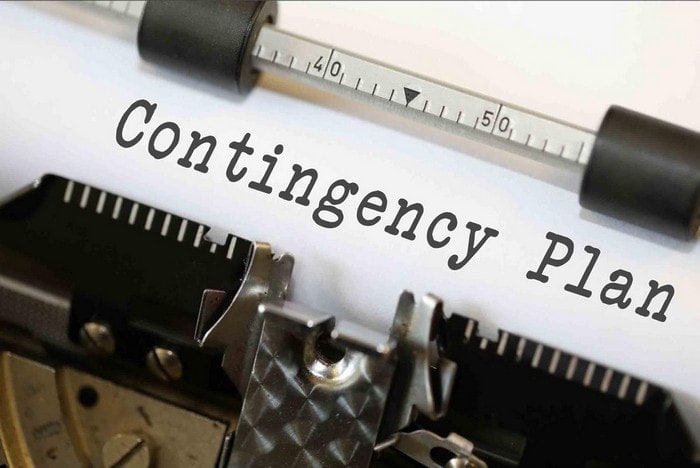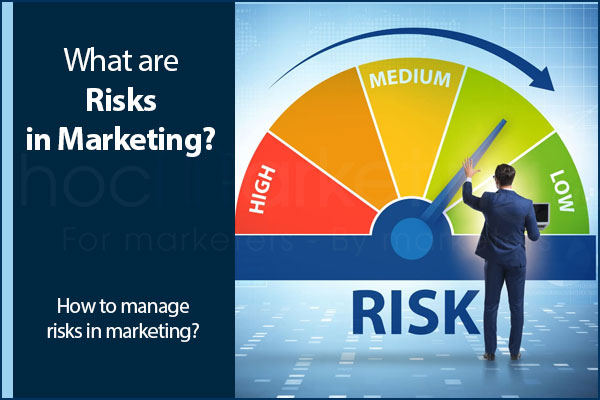
Crafting a Winning Contingency Plan: Tips and Strategies

Learn how to safeguard your business from emergencies, unexpected events, and positive situations with a well-crafted Contingency Plan Discover its importance, when to use it, and the steps to create the perfect plan for your business
A solid contingency plan is crucial for businesses to handle unexpected emergencies and maintain their operational efficiency. In this article, we will explore the significance of contingency planning and its relevance to businesses. Let's begin without any delay.
Introduction
In the world of business, having solid plans in place is essential. But even the most carefully crafted plans can hit roadblocks and fail to deliver the desired results. It's important to stay flexible and willing to adjust strategies as needed to stay on track towards success.
Despite unforeseen circumstances, businesses don't come to a halt. They often have a backup plan, commonly referred to as a contingency plan, to ensure smooth operations. This plan outlines strategies to optimize processes, no matter the situation.
When your original plans don't go as intended, it's crucial to have a backup plan in place. Many businesses rely on contingency plans to mitigate risks and ensure success. With potential obstacles looming, having a backup plan can be the key to ensuring your company stays on track.
Incorporating a contingency plan into your business management strategy is crucial to ensure that there are no disruptions in the process you are working on. This is an essential aspect that should not be overlooked.
Definition
The contingency plan is a plan that is put to order in place of the primary when there is a disruption in plan A, and things don’t go as planned.
Smart managers understand that important processes always come with risks. That's why they use contingency plans to prepare for potential obstacles and ensure successful completion of projects. However, even with these plans in place, there is still a possibility that the project may not be completed successfully.
Example of the Contingency Plan
Contingency plans have become a common practice worldwide and are being utilized by various businesses. To illustrate this, consider the case of a company that has a plan in place in case of a natural disaster or other unexpected event.
The governments that we have been using the contingency plans to make sure that disaster recovery happens in the best way for a country.
Without a contingency plan in place, organizations run the risk of facing significant challenges and potential failures. It is crucial to prioritize the development and implementation of such a plan in order to mitigate risks and ensure the overall success and stability of the organization.
Deciphering the key details of a Contingency Plan
Now that you have a basic understanding, we are going to talk about it in details a little bit.
Contingency plans are often implemented in response to potential negative incidents that could damage a company's reputation. Additionally, these risks have the potential to impact a company's financial stability, but contingency plans can mitigate those effects.
Contingency Plan in Positive Situations
This windfall may not have been anticipated, but the company has a contingency plan in place to invest it strategically to generate even more revenue. In this case, the contingency plan has a positive impact on the business and helps it to grow and thrive.
The plan that the company makes to use this money will also be known as the contingency plan.
Contingency Plan for Right Reaction to certain events of Future
A contingency plan is essentially a proactive strategy that enables a company to effectively manage a crisis. It is developed in response to potential events that may occur, whether they are positive or negative in nature.
Why do businesses need a Contingency Plan?
The purpose of this plan is to enable the company to effectively manage any potential risks or issues that may arise during unexpected situations that occur over time.
There are risks that are already present and known, and it is crucial to identify and address them in order to prevent them from causing harm to the company. Without a clear understanding of these risks, it is impossible to create an effective plan to mitigate them. It is important to remember that contingency plans should not just be reactive measures taken when something goes wrong, but proactive strategies to prevent potential risks from becoming problematic in the first place.
There could be many situations in which the contingency plans can be created, and the company needs to know all about it for sure.
When Should One Use A Contingency Plan?
Contingency plans are essential for addressing potential risks and unforeseen events that may arise within a company. While some risks may be recognized, others may be unknown. Without a clear understanding of potential risks, it becomes difficult to effectively plan for and mitigate them.
Contingency plans are not just activated when things go wrong. It's crucial to be prepared for various situations to ensure the best possible outcomes.
Creating the Perfect Business Contingency Plan
This is one of the most important things that you need to think about because the creation of the contingency plan is going to help a lot in the process for sure.
Steps of Creating right Contingency Plan
Creating effective contingency plans is crucial for any organization to ensure business continuity in the face of unexpected events. To help you develop the best contingency plans possible, we have compiled some essential tips that you should pay close attention to. These insights will provide you with the necessary guidance to develop a robust contingency plan that can help you navigate through the most challenging situations.
Steps of Creating right Contingency Plan
#1. Identifying the Risks
It is crucial to thoroughly assess all potential risks that your business or projects may encounter when developing a contingency plan. These risks are the factors that can make your company susceptible, so it is imperative that you have a clear understanding of them.
By conducting a thorough risk analysis for your company, you can develop a comprehensive plan to effectively manage unexpected events that may arise in the future. This critical step is essential in creating a solid contingency plan for your business. Understanding all potential risks that could hinder your company's growth is crucial in devising a strategy to mitigate these risks.
In order to effectively prepare for potential risks, it is crucial to understand what could potentially harm the company's operations. These risks can leave the company in a vulnerable position and unable to function for a period of time. Therefore, identifying and analyzing these risks is essential in developing a plan to ensure the company can quickly resume operations.
#2. Keep Your Resources in Check
To ensure that your contingency plan is effective, it's crucial to have the necessary resources to handle any unexpected events that may arise.
Resources encompass a wide range of tools, facilities, people, teams, departments, and more. Utilizing these resources enables a company to navigate any challenge with ease.
#3. Start drafting your Contingency Plan
Now in the third step of your contingency plan, you need to draft your contingency plan for all the different risks that you have identified in the first step.
When creating a contingency plan, prioritize the most crucial risks that could potentially harm your company's future. Additionally, it's important to continue drafting plans for future events to ensure that your business operations continue to run smoothly. Keep in mind factors such as scheduling, workforce responsibilities, and communications when creating your contingency plan.
It is crucial to follow these three steps to create an effective contingency plan for your business. However, the work doesn't stop there. It's equally important to share the plan with others in your organization and regularly revise it to reflect any changes in resources, employees, or technologies.
In Conclusion
There is simply not a single speck of doubt about the fact that having a contingency plan is one of the most important things that the businesses need to keep in mind.
By following the aforementioned steps, businesses can create a contingency plan to effectively manage and navigate through potential risks and unforeseen events. Ensure your business is prepared for any future circumstances by implementing these tips.
















